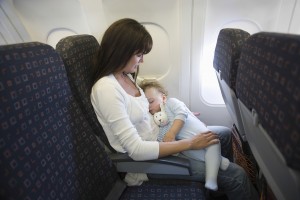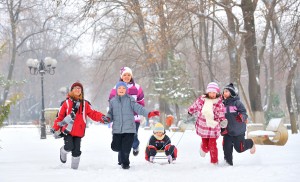 Since 9/11, travel has gotten much more restrictive but it doesn’t mean that that are there aren’t certain things that you still can’t bring on a plane. The Canadian Air Transport Security Authority (CATSCA) is the official source of what items to carry on a plane. Some are a bit quirky. Others are a bit more practical. When you are traveling, here are our top picks of things you can carry on a plane.
Since 9/11, travel has gotten much more restrictive but it doesn’t mean that that are there aren’t certain things that you still can’t bring on a plane. The Canadian Air Transport Security Authority (CATSCA) is the official source of what items to carry on a plane. Some are a bit quirky. Others are a bit more practical. When you are traveling, here are our top picks of things you can carry on a plane.
1. Axes. Looks like that Battle Axe League in Toronto is really taking off!
2. Breast Milk. Passengers flying with or without their child will be permitted to bring breast milk in quantities greater than 100 ml provided it is presented to the Screening Officer for inspection prior to screening. Gel or ice packs are also permitted.
3. Corkscrews. Without the attached knife, your corkscrew is permitted on your carry-on or checked luggage.  Your swiss army knife will likely be confiscated.
Your swiss army knife will likely be confiscated.
4. Cremated Remains. Cremated remains in a container may be packed as part of your carry-on baggage. The container, however, must pass separately through the x-ray machine. For more information, please check the special procedures in place for screening cremated remains.
5. Razor Blades and blade cartridges. Razor blades that are encased in their plastic holders (disposable razors and razor blade cartridges) are permitted in carry-on baggage.
6. Ink/Toner Cartridges. You can carry-on but surprisingly, not check ink or toner cartridges in your baggage. Note: Ink cartridges  with a capacity of 17.6 oz. (500 g.) or more are not permitted in checked baggage for all flights – domestic, U.S. and international.
with a capacity of 17.6 oz. (500 g.) or more are not permitted in checked baggage for all flights – domestic, U.S. and international.
7. Juice for babies and baby food. Other things you can carry on a plane are baby formula, food, juice, water and other baby items – these are allowed in your carry-on baggage or personal items. You can take these through the security checkpoints and aboard your plane. However, you must be travelling with an infant under two years of age (0-24 months). You may bring gel or ice packs to keep your baby products cool. All items including formula must be presented to the Screening Officer and will be inspected.
8. Non-prescription medication. These items are considered to be essential non-prescription medications. You are allowed to carry volumes greater than 100 ml (3.4 oz.) in your carry-on baggage. These liquids must be declared to the Screening Officer separately. Documentation to support your medical needs or condition is not required; however, if you feel that it would help ease your screening, it should be presented to the screening officer along with your medically necessary items.
9. Protein Powder
10. Syringes. Must be for personal medical use, and the needle guard must be in place. The person must possess medication that is to be administered by means of the syringe or needle and biojectors. To facilitate screening, CATSA recommends that the medication be properly labelled (professionally printed label identifying the medication or a manufacturer’s name or pharmaceutical label – For more information, click here.
What are your essential items for carrying on a plane?




